14 June 1800, Marengo, Alessandria, Piedmont, Italy – 44°53′N 8°41′E.
Responding to an Austrian advance on Genoa, Napoleon Boneparte (1769–1821) made a perilous crossing of the Alps to Milan and cut off the Austrian lines of communication. The Austrians ended up massed in Alessandria, with the French bearing down on them.
Napoleon was tricked by a local double agent, and sent large numbers of soldiers north and south, away from the Austrian concentration. The Austrians chose that moment to launch a surprise attack against the depleted French force. The Battle of Marengo was underway.
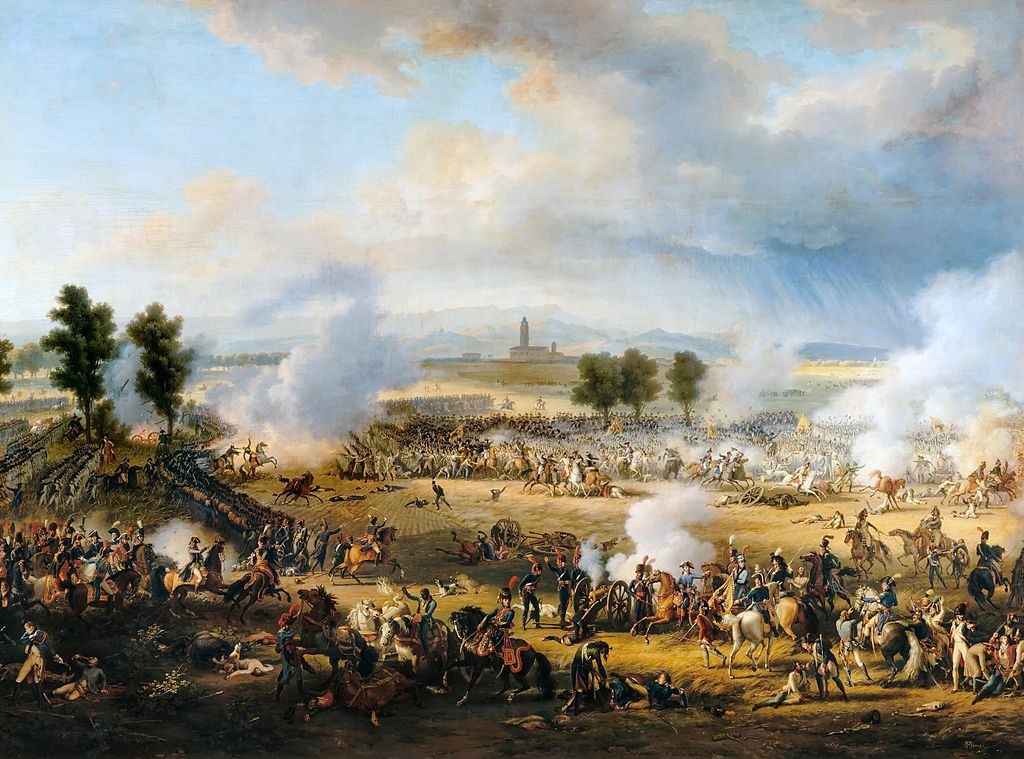
Initially, the Austrians did well, but a fog of smoke from muskets and artillery proved to be their undoing. Hiding in the cordite-laden fug, General François Étienne de Kellermann organised his cavalry into a blistering counterattack that sent the Austrian troops into a rout. Fourteen thousand Austrian servicemen were killed or wounded in the action, and the Battle of Marengo secured Napoleon’s grip on political power in Paris. He would become emperor just 4 years later. In commemoration of the battle, Napoleon named at least four French naval vessels after the battle, and also named his beloved horse ‘Marengo.’
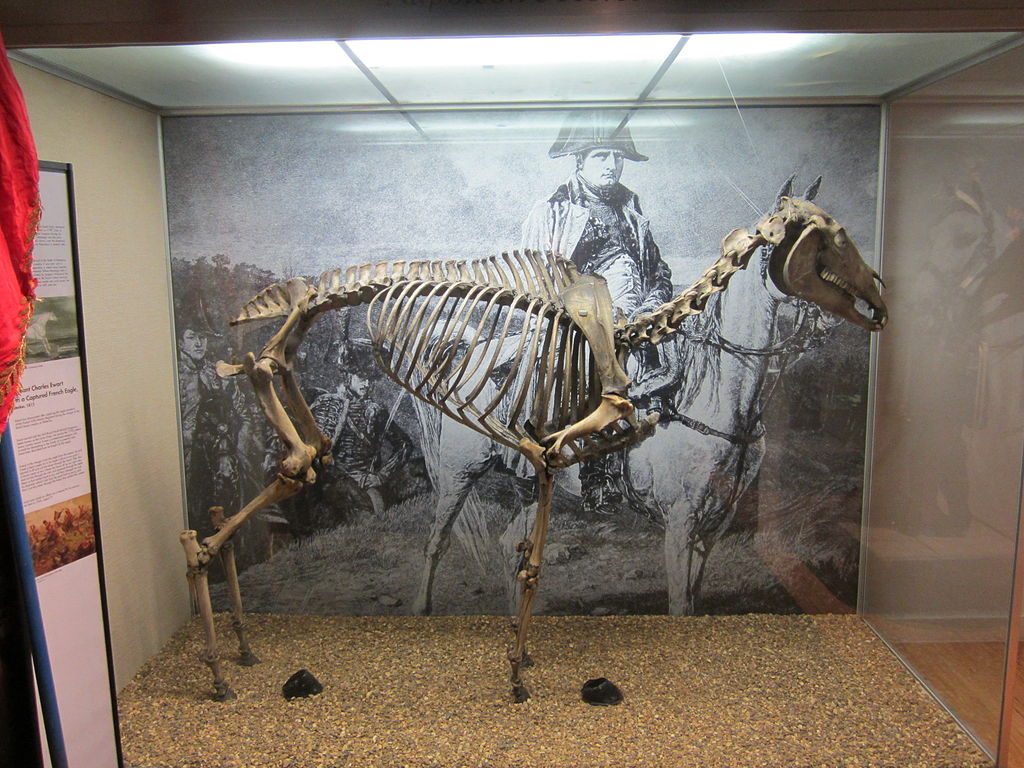
Now, it is known that Napoleon liked to eat chicken, and something of a myth has grown up regarding the food that his cook, Dunand, made for the officers after the Battle of Marengo. The army was too far from its supply wagons to get at the stores, so it is said that Dunand offed a couple of chickens, foraged some mushrooms, broke open the cognac (which was from Boneparte’s own flask) and got his mitts on some tomatoes. Borrowing pans from the Marengo farm, he cooked a fricassee on the battlefield, and used the steam to cook some crayfish. This is the dish known as poulet Marengo.
Napoleon so loved the dish that he apparently asked asked for it after every battle, and was superstitious about the ingredients used.
Food writer and diplomat Alan Davidson has cast doubt on the Battle of Marengo story, and has suggested that the dish was more likely to have been invented in a restaurant in commemoration of the battle. Davidson’s major thesis is that tomatoes were not available in Piedmont in 1800.
But he’s wrong.
Tomatoes were introduced to Italy in the 17th Century, and were in extensive use by 1800. The initial reticence to use tomatoes in food comes from their toxic reaction with pewter, but by 1800, people were not using pewter cookware, and tomatoes were finding their way into many dishes.
Having read a bit further than Wikipedia, The Nosey Chef has formed its own opinion. The story is so ubiquitous, the battle so well documented, and Larousse so sure of itself that we think that something was cooked after the end of hostilities, and that it was probably made very like the poulet Marengo we have given here. The enchanting part is in the way that a ‘ghetto’ stock is made from the carcass before the rest of the dish is finished off – not many dishes include such a roughly made stock. All the other ingredients could be foraged, or would be available within a fighting force separated from its supply wagons.
Recipes for Poulet Marengo vary quite a bit. Chicken, tomatoes and mushrooms are always present. But the crayfish comes and goes, the cognac is often white wine, and lazy cooks omit the cruton and the egg. Rather than beating ourselves up over a recipe that was never written down, we looked around for a good version and found one from Stephane Nguyen of the French Cooking Academy. It is a bit more rustic than the Escoffier and Larousse editions in that is has that ‘ghetto-style’ stock in it. Therefore, the Nguyen version feels more like something that would have been cooked in the open after a massive fight.
Poulet Marengo
Ingredients
- 1 whole chicken jointed and seasoned, with the carcass cut up into small pieces and reserved
- 400g tinned chopped tomatoes
- 400ml water
- 4 cloves of garlic, cracked with the back of a knife
- 100ml cognac (see notes)
- 200g mushrooms, quartered
- 4 slices of white bread, crusts removed
- 1 egg per person
- Olive oil
- 1 tbsp parsley, chopped as a garnish
- Sea salt and freshly ground black pepper
Instructions
Begin by making a rough chicken stock. Heat 2 tbsp of olive oil in a large sauté pan and fry the chopped carcass for about 10 mins until browned. Pour in the water and scrape the yummy bits from the bottom of the pan. Cook for another 2 mins and then transfer everything in the pan to a large jug and set aside.
Heat the same pan again with some more olive oil. Fry the chicken for about 5 mins on each side until browned but not cooked. Remove to a plate.
Add the garlic to the pan and cook for 30 seconds until gilded. Turn the heat off (for safety reasons) and then add all the cognac. Put the heat back on and reduce a bit. Strain the stock into the pan and reduce until syrupy.
Add the tomatoes, bring up to a bubble and put the chicken back in. Cook on a simmer for 15 mins until cooked (check the temperature with a probe – you are looking for 74˚C in the thighs).
While the chicken is cooking, season and fry the mushrooms in olive oil until browned and soft. Brush the bread with olive oil and fry on both sides until well marked (a griddle pan is great). Heat some more oil and fry the eggs. Cooking these three elements is easier if you have an oven on low to put the mushrooms and the bread in while you do the eggs.
Serve as one or two pieces of chicken per person covered with tomato sauce and mushrooms on the side. Give each person one to two pieces of crouton covered with a bit of sauce and topped with a fried egg. Scatter over the parsley.
Notes
Both Larousse and Escoffier use white wine instead of cognac. Escoffier adds the crayfish, but Larousse omits them. If you want to add the crayfish (or whole king prawn if crayfish are not around), then put them on top of the chicken pieces and lid the pan for about 5 mins until they are pink in the steam.



 (3 votes, average: 4.33 out of 5)
(3 votes, average: 4.33 out of 5)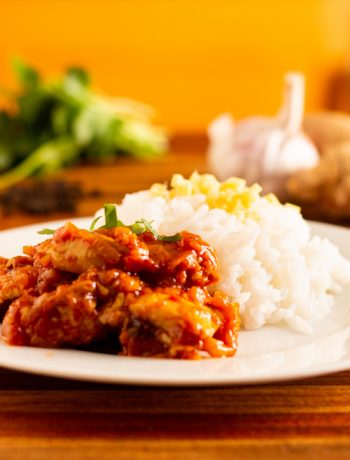
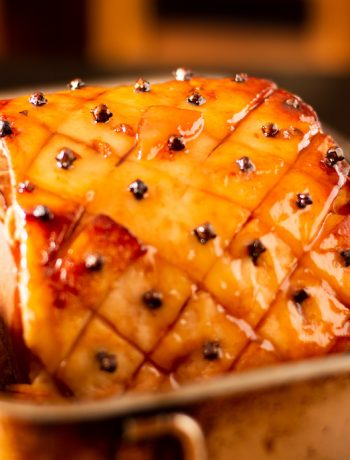
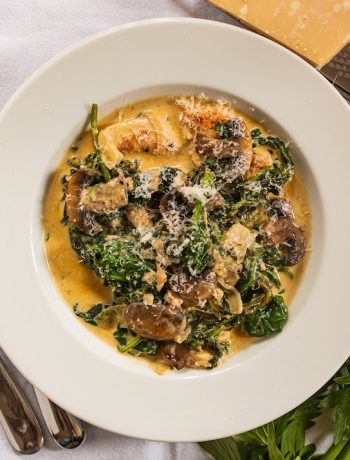
No Comments